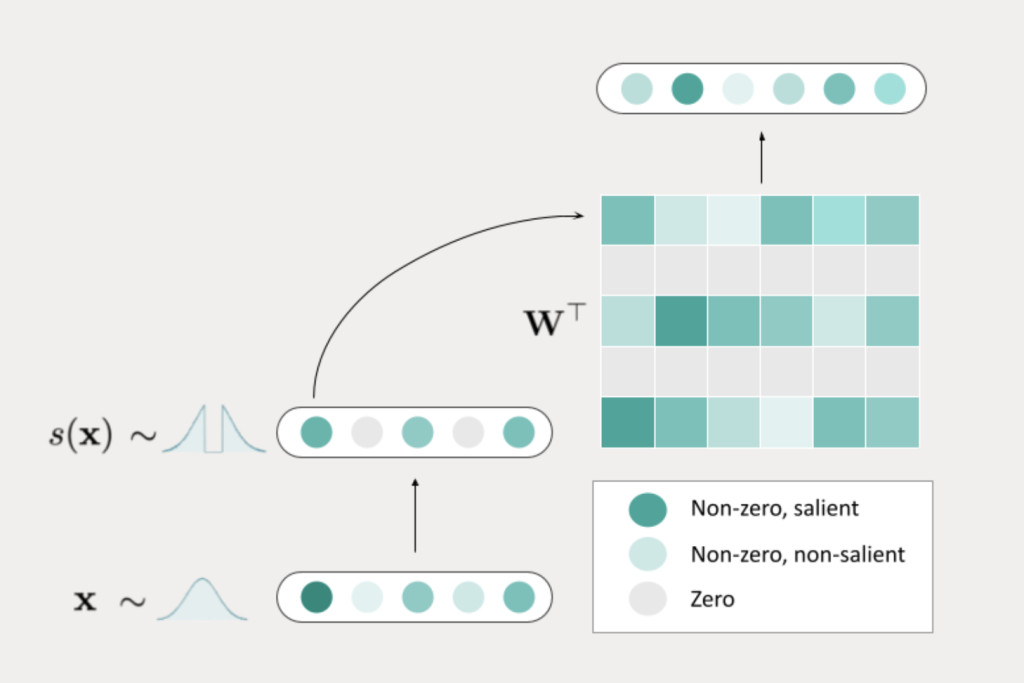Together AI has introduced a groundbreaking technique known as TEAL (Training-Free Activation Sparsity in LLMs) that has the potential to advance the field of efficient machine learning model inference significantly. The company, a leader in open-source AI models, has been exploring innovative ways to optimize model performance, especially in environments with limited memory resources. TEAL is a notable step forward in this pursuit, providing a novel method to sparsify activation in LLMs, which promises enhanced performance with minimal model degradation.
The Challenge in Large Language Models
LLMs are known for their impressive capabilities but are notorious for their massive memory requirements. Traditional inference processes in these models are bottlenecked by the speed at which data can be transferred between memory and processing units. This memory-bound nature has led to the development of several techniques, such as quantization and weight sparsity, to reduce models’ size without compromising performance.
One of the more recent advancements is activation sparsity, which takes advantage of certain redundant hidden states in LLMs, allowing for the pruning of unnecessary weight channels. However, models like LLaMA have shifted from using ReLU-based MLPs (naturally exhibiting high sparsity) to SwiGLU-based MLPs, which are less conducive to activation sparsity. This has made it difficult to apply activation sparsity techniques across newer models successfully.
The Concept Behind TEAL
TEAL emerges as a solution to the challenges posed by activation sparsity in modern LLMs. It introduces a simple, training-free approach that sparsifies activation by applying magnitude pruning to hidden states throughout the model. The approach allows for an impressive 40-50% model-wide activation sparsity with minimal impact on performance.
The primary advantage of TEAL lies in its ability to optimize sparsity across all tensors in the model. Unlike previous methods, such as CATS, which sparsified only specific areas of the model, TEAL targets every tensor, achieving higher overall sparsity without requiring additional fine-tuning or pretraining. TEAL significantly reduces the memory bandwidth needed for LLM inference by avoiding transferring zero-valued weight channels to memory, leading to faster processing times.
The Technical Implementation of TEAL
TEAL’s implementation focuses on optimizing sparsity at the transformer block level, ensuring that every tensor in the model benefits from sparsification. At 25% sparsity, the model experiences near-zero performance degradation, while at 40-50% sparsity, the degradation remains minimal. This contrasts with other methods like CATS, which experience more significant performance drops at higher sparsity levels. One of the key factors behind TEAL’s success is its approach to sparsifying weight matrices. TEAL sparsifies the weight matrices rather than through gated outputs, as seen in other methods. This design choice results in lower error rates and better overall performance, even at higher sparsity levels. As a result, TEAL can achieve speed-ups of 1.53x to 1.8x in single-batch decoding, a significant improvement for real-world applications where inference speed is critical.
Hardware and Quantization Compatibility
Along with the activation sparsity benefits, TEAL is also compatible with quantization, another key technique for reducing the size & improving the efficiency of LLMs. Quantization reduces the precision of model parameters, reducing the memory and computational resources required for inference. TEAL’s sparsity approach complements quantization methods, allowing models to achieve even greater speed-ups while maintaining performance. Together AI’s integration of TEAL with GPT-Fast, along with support for CUDA Graphs and Torch Compile, has further enhanced its hardware efficiency. TEAL performs well on GPU hardware, including A100 GPUs, which can outpace traditional dense kernels in certain scenarios. This makes it an attractive option for environments with limited hardware resources, particularly when handling low-batch inference tasks.
Applications and Future Potential
TEAL’s most immediate application accelerates inference in resource-constrained environments, such as edge devices with limited memory and processing power. TEAL’s ability to optimize memory usage and reduce latency in LLM inference makes it an ideal solution in these scenarios. It excels in low-batch settings, where it can deliver the most significant speed improvements. TEAL also holds promise for inference providers who manage large fleets of GPUs and models. Together AI, which hosts over 100 leading open-source models, is well-positioned to take advantage of TEAL’s performance improvements. TEAL allows these models to be served more efficiently by reducing the memory footprint and improving processing speeds, even when active batch sizes are relatively small.
Conclusion
The release of TEAL by Together AI marks a significant step forward in optimizing LLMs. TEAL offers a simple and effective solution to the memory bottlenecks that have long plagued LLM inference by introducing a training-free approach to activation sparsity. Its ability to achieve model-wide sparsity with minimal degradation and its compatibility with quantization makes it a powerful tool for improving ML models’ efficiency in resource-constrained environments and large-scale inference settings.
Check out the Details here. All credit for this research goes to the researchers of this project. Also, don’t forget to follow us on Twitter and LinkedIn. Join our Telegram Channel.
If you like our work, you will love our newsletter..
Don’t Forget to join our 50k+ ML SubReddit
The post Together AI Present TEAL: A Groundbreaking Training-Free Activation Sparsity Method for Optimizing Large Language Models with Enhanced Efficiency and Minimal Degradation in Resource-Constrained Environments appeared first on MarkTechPost.
Source: Read MoreÂ

![Why developers needn’t fear CSS – with the King of CSS himself Kevin Powell [Podcast #154]](https://devstacktips.com/wp-content/uploads/2024/12/15498ad9-15f9-4dc3-98cc-8d7f07cec348-fXprvk-450x253.png)